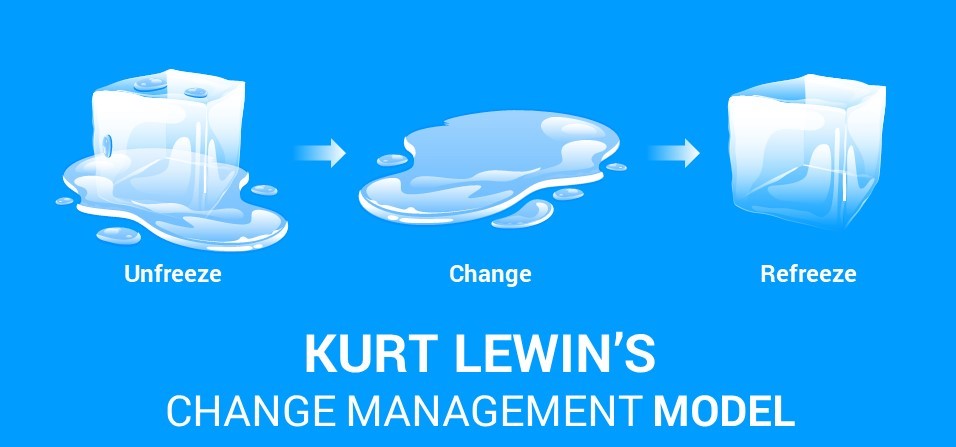Kurt Lewin developed a three-stage model of planned change explaining how to initiate, manage, and stabilize the change process. The three stages are:

Unfreezing
This stage deals with motivating employees to replace their old behaviours and attitudes with those desired by management. The process starts with management disconfirming the usefulness or appropriateness of employees’ present behaviours or attitudes. The aim is to prepare employees to change, by getting them to become dissatisfied with the old way of doing things. It requires heating up the status quo, creating discomfort with the ‘as is’, this can be done by communicating the consequence of not changing, helping employees to see that it is not helpful to remain where we are/ behave the way we do. The ‘penny must drop’; insight must be developed. This will be the mobilizer to move.
Changing
This is a difficult stage, as things seem to be little out of control. It is a learning phase. New ways need to be found. This stage involves learning – providing employees with new information, new behavioural models, or new ways of looking at things. The purpose is to help employees learn new concepts or points of view. Role models, mentors, experts, benchmarking results and training are useful mechanisms to facilitate change. In this phase management must empower and enable, gearing for the future state.
Refreezing
Change is stabilised by helping employees integrate the changed behaviour or attitude into their normal way of doing things. Employees are first given the change to exhibit the new behaviours or attitudes, and thereafter positive reinforcement is used to reinforce the desired change. Management role here is monitoring, feedback, celebrating and communicating small victories.